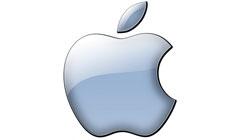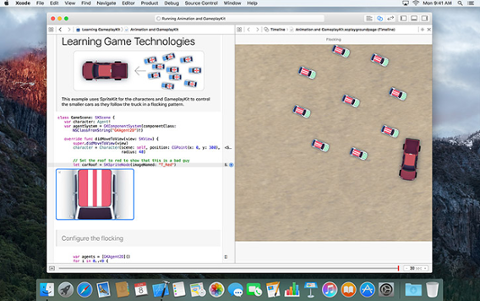Not long ago, I thought
Macworld would be something of a waste of time without
Apple around. But I returned to the conference this year, with the aid of a free pass, and found the Mac system is still as dynamic as it's ever been. Yesterday was about Wi-Fi, storage and some related nuts and bolts. And yet there's more...
AirPrint Printers

Considering that color laser printers are now below the $200 mark and multifunction color laser printers (MFP-CLPs) are below $500, there’s no reason to buy an inkjet printer anymore. Many people also have iOS devices, either iPads and/or iPhones. So AirPrint, jointly developed by Apple and Hewlett-Packard, is now a feature I expect to see in more and more products. Wireless is a great feature that allows any place with power to serve as a printer location. Combined with AirPrint and a Bluetooth Keyboard, an iPad suddenly becomes a micro-office you can keep in your living room. Last year, I was a fan of HP’s 1415fnw ($450 retail), an MFP-CLP. This year, I'm an even bigger fan of its successor, HP’s 175nw, which has a street price of about $350. Xerox’s representatives told me Xerox AirPrinters will be introduced at some point, but they aren't in any current models. Considering Xerox’s superior color print quality, that’s sad. Since AirPrint isn’t available, I’ll keep steering SOHO users to HP’s 175nw for now. There are a few choices if you’ve got a decent printer and want to add AirPrint capability. Printopia ($20) is the best software-based solution I’ve tried for OS X machines. However, software-based solutions require the OS X host to be on whenever you print from an iOS device. Lantronix’s hardware-based solution, the XPrint Server ($100 USB/$150 Ethernet) is a better choice for those that don’t leave their Mac on or who don’t have a Mac in the first place. The only caveat is that it has a more limited list of supported printers.
Bluetooth and Audio
When I visited the Kanex and Polk booths, I told their people they should get together and make a headphone mount for Bluetooth A2DP devices, or that Kanex should make a clip for AirBlue or its successor. Even though Kanex intends AirBlue to be a home stereo Bluetooth A2DP interface, I contended that the battery makes it a good adapter for headphones (as I use it), and a removable battery and clip would do wonders as a competitive wired-to-wireless a headphone adapter. I spoke with Adam at Polk’s booth about the UltraFocus 8000s which he demoed for me. It wasn’t until I asked him about the company’s other products that I realized he was their hired DJ, and not a Polk employee. He was a good guy to have around the booth, considering that within a few minutes of his demoing Polk’s UltraFocus 8000 headphones with a flat, accurate response, I wanted a pair. The Polk 8000s ($350) handily beat my AKG DJ-181s (less than $200). We also shared a joke about the jokes that are Beat's distorted, base-heavy, muddy-sounding headphones. After I took a third listen to Beat's new offering, I came away less impressed by its $200 headphones than the cheap pair of $40 Sony portable headphones that I used to A/B the audio.
USB Charging
Scosche's reVolt h2, a two-port (2.1A/port) USB charger that sells for $30 retail, is a viable solution for people with more than one iPad or tablet in the house. Kanex also has a four-port (2.1A per port) charging station called the Sydnee, with cable management. At $100 retail, Sydnee charges a $40 premium for added cable management. I'd drop the price by at least $30 to make it competitive. While four-port USB adapters are common, those that can provide 2.1A per port are virtually nonexistent. Parat Solutions makes devices geared toward classroom and medical settings where 10 or more iPads are used frequently. However, at hundreds of dollars for multiport 2.1A output, the Kanex might fit a sweet spot for low-level demand and home users who have tablets in abundance. In a classroom or health-care setting, I'd seriously look at the Parat Cases. Despite their price tag, their ability to lock up shiny iPads will probably pay off in preventing thefts.
Software
A MacPaw's booth, the reps gave me their CleanMyMac 2 beta, which is under NDA. So, I will have to wait until it's released before I can share my first impressions or write a more in-depth review. Based in the Ukraine, MacPaw is passionate about the product, so I expect the final offering to be top-notch.
Guitar and MIDI
Fishman's TriplePlay ($400), a wireless MIDI guitar-mounted controller, is an inexpensive way to get into guitar-controller technology. Across the show floor, Godin Guitars was showing off a Fishman MIDI Controller built into their guitars that weren’t much more expensive than standard guitars.
Fun
Since I almost never have time to play, I skipped most of the game booths. Still, some accessories caught my eye. Among them was the
BowBlade, which offers a composite bow with iPhone mount. Its inventor — Ron Green, a licensed chiropractor — espoused the merits of using the BowBlade to make game-playing healthier, improve core strength, and have more fun using the iPhone’s accelerometer in concert with their bow. When asked, he said interest in the product has spiked since the TV series
Arrow premiered this season. It would be cool if BowBlade and
Arrow, given that they’re both Toronto-based, could do some kind of product placement on the show. (Looking at Ron I thought he could make a great villain or second archer. He was a stuntman in the past.) If anyone from the production team of
Arrow reads this, you know what to do.
Conclusion
Back in the dark days of Apple and the Mac platform, simply convincing people that the Mac was viable boiled down to showing them how much better it was in terms of usability, consistency, and the reliability of its peripherals. I could cite countless ROI studies backing me up, but in the end it took the iPod, iOS products, iTMS games and a return to sexy product design for Apple to reach the masses. Even without Apple there, just looking at this expo proves its ecosystem thrives despite its smaller size, and leaves me with a much better feeling than the expos staged less than a decade ago. My only worry is that Apple, being at the top of the heap, will become complacent and drift away from its roots, which are marked by a combination of ease of use and hacker spirit. Those things led it to leave hidden capabilities (such as expansion slots and frameworks with deeper layers) in its final products for enterprising hackers to find and develop the next great thing.
 Considering that color laser printers are now below the $200 mark and multifunction color laser printers (MFP-CLPs) are below $500, there’s no reason to buy an inkjet printer anymore. Many people also have iOS devices, either iPads and/or iPhones. So AirPrint, jointly developed by Apple and Hewlett-Packard, is now a feature I expect to see in more and more products. Wireless is a great feature that allows any place with power to serve as a printer location. Combined with AirPrint and a Bluetooth Keyboard, an iPad suddenly becomes a micro-office you can keep in your living room. Last year, I was a fan of HP’s 1415fnw ($450 retail), an MFP-CLP. This year, I'm an even bigger fan of its successor, HP’s 175nw, which has a street price of about $350. Xerox’s representatives told me Xerox AirPrinters will be introduced at some point, but they aren't in any current models. Considering Xerox’s superior color print quality, that’s sad. Since AirPrint isn’t available, I’ll keep steering SOHO users to HP’s 175nw for now. There are a few choices if you’ve got a decent printer and want to add AirPrint capability. Printopia ($20) is the best software-based solution I’ve tried for OS X machines. However, software-based solutions require the OS X host to be on whenever you print from an iOS device. Lantronix’s hardware-based solution, the XPrint Server ($100 USB/$150 Ethernet) is a better choice for those that don’t leave their Mac on or who don’t have a Mac in the first place. The only caveat is that it has a more limited list of supported printers.
Considering that color laser printers are now below the $200 mark and multifunction color laser printers (MFP-CLPs) are below $500, there’s no reason to buy an inkjet printer anymore. Many people also have iOS devices, either iPads and/or iPhones. So AirPrint, jointly developed by Apple and Hewlett-Packard, is now a feature I expect to see in more and more products. Wireless is a great feature that allows any place with power to serve as a printer location. Combined with AirPrint and a Bluetooth Keyboard, an iPad suddenly becomes a micro-office you can keep in your living room. Last year, I was a fan of HP’s 1415fnw ($450 retail), an MFP-CLP. This year, I'm an even bigger fan of its successor, HP’s 175nw, which has a street price of about $350. Xerox’s representatives told me Xerox AirPrinters will be introduced at some point, but they aren't in any current models. Considering Xerox’s superior color print quality, that’s sad. Since AirPrint isn’t available, I’ll keep steering SOHO users to HP’s 175nw for now. There are a few choices if you’ve got a decent printer and want to add AirPrint capability. Printopia ($20) is the best software-based solution I’ve tried for OS X machines. However, software-based solutions require the OS X host to be on whenever you print from an iOS device. Lantronix’s hardware-based solution, the XPrint Server ($100 USB/$150 Ethernet) is a better choice for those that don’t leave their Mac on or who don’t have a Mac in the first place. The only caveat is that it has a more limited list of supported printers.

